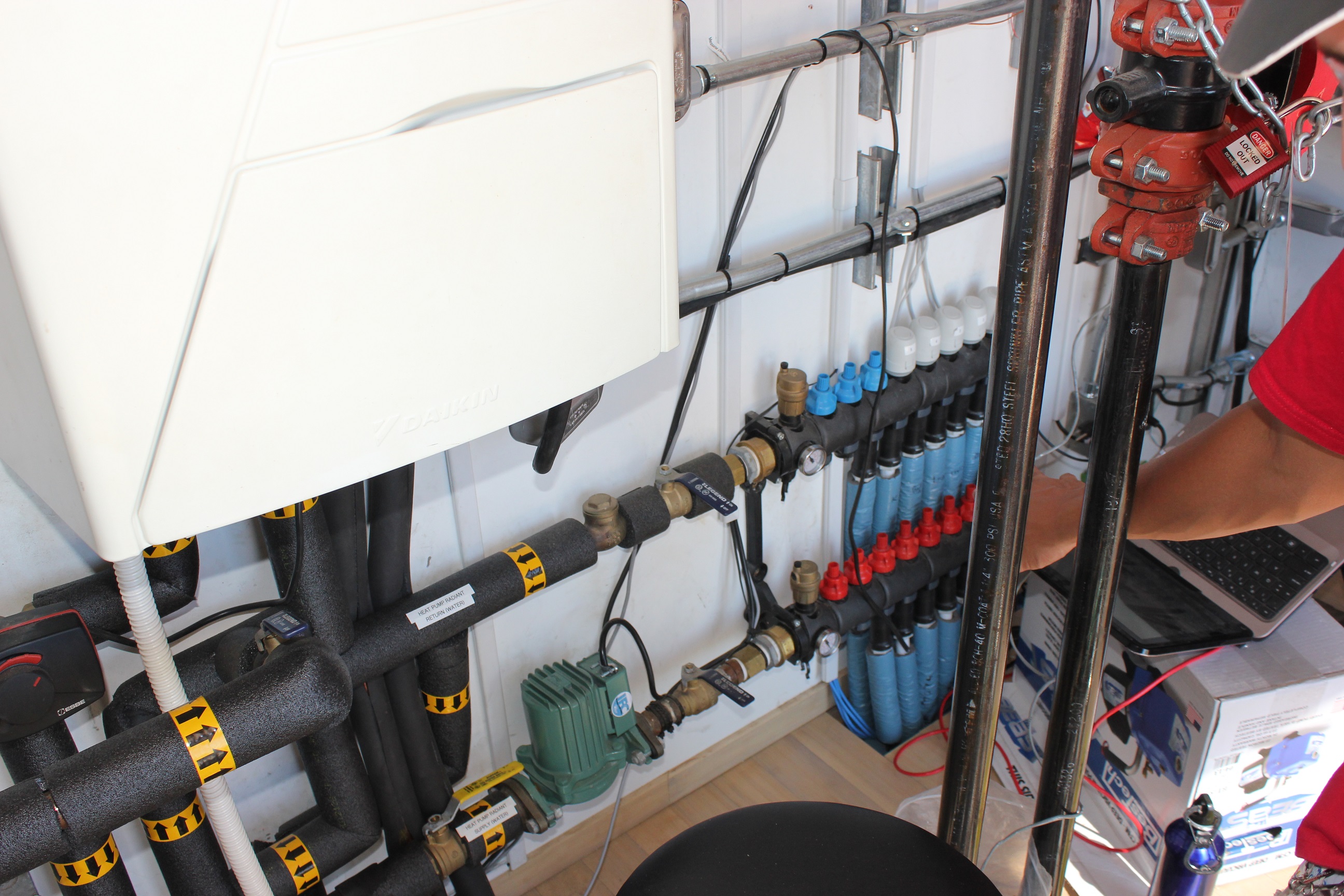Technology Spotlight: Heat Pumps
Tuesday, October 28, 2014By Irene Ying
Temperature control, whether heating water for a bath in winter or cooling a bedroom on a blazing summer day, is essential to a comfortable home.
Heating and cooling eat up 48% of an average home’s energy bill, but you can have it all—comfort and efficiency—with heat pump systems. In contrast to conventional temperature control, which is achieved by generating heat or cold, these technologies “transfer” heat, which is far more efficient than creating it. In fact, a modern heat pump uses about 50% less electricity than a furnace or baseboard heater. In moderate climates, heat pumps can provide up to three times the energy they consume. As a bonus, in warm weather, heat pumps can do double-duty as air conditioners by moving hot air outside instead of in.
Three types of heat pumps, differentiated by heat source, are currently available: air, water, and geothermal.

A team member from the Santa Clara University Solar Decathlon 2013 team discusses the heat pump system in the team’s Radiant House. This system used hot water to heat the house and cold water to cool it. (Credit: Carol Laurie/U.S. Department of Energy Solar Decathlon)
Air-based systems generally use fans to extract heat from ambient air outside the house and then transfer the heat indoors. Air-based systems can also run in reverse, transferring indoor heat outdoors to cool the interior. Such systems are the easiest and most economical to install. However, because they rely on outside air temperature, air-source heat pumps are less efficient in climates in which temperatures dip below freezing.
Geothermal systems, which use the heat in the Earth’s crust, can reduce the energy cost of household heating by up to 60%. These systems use long loops of tubing buried in the ground to extract heat from the ground. Because the ground is warmer than air in winter, geothermal systems work more efficiently at lower temperatures than air-source systems. Likewise, the ground is cooler than the air in summer, so geothermal systems are also more efficient air-conditioning devices in hot climates. They are, however, more expensive than air-source installations.
Water-source systems transfer heat throughout a building using closed loops of water. These systems are able to simultaneously move hot and cold water to different parts of a building, depending on the needs. Thus, some parts of a building can be heated while others are cooled. For instance, the unwanted heat of a cold storage room could be used to heat a tank of hot water for washing. In addition, if the water heater is located in the basement, it can extract moisture from the air and act as a dehumidifier in wet summer months. This option can reduce water heating costs by up to 50%. However, this technology can require more extensive work to install.
Air isn’t the only thing that can be efficiently heated by heat exchange; water can also be heated using a heat pump water heater. Similar to the water-source heat pump, heat pump water heater systems work by drawing heat from the surroundings—for example, outdoor air in the summer and the warm ground in the winter—but use the energy to heat water instead of air. Compared to conventional water heaters, heat pump water heaters are up to three times more energy-efficient.
Many U.S. Department of Energy Solar Decathlon teams have used heat pumps to achieve energy-efficient competition houses. In 2013, the University of North Carolina at Charlotte used a pump system with both heating and cooling capabilities, plus a system of capillary cubes circulating water, to achieve cooling without using compressors or refrigerants in the UrbanEden house. The University of Nevada Las Vegas team likewise used pump systems for heating and cooling its DesertSol, which was designed for the extreme conditions of desert living. Radiant House, from Santa Clara University, created a uniform living environment using a water-based heat pump system.
As the Solar Decathlon continues to demonstrate, amenities such as hot showers and air conditioning need not be sacrificed when constructing or living in an energy-efficient home.
Learn more about the benefits of the various types of heat pumps at the Energy Savers website.
Irene Ying is a member of the U.S. Department of Energy Solar Decathlon communications team.
Tags: Las Vegas, North Carolina, Santa Clara, Solar Decathlon, Solar Decathlon 2013, Technology Spotlights
